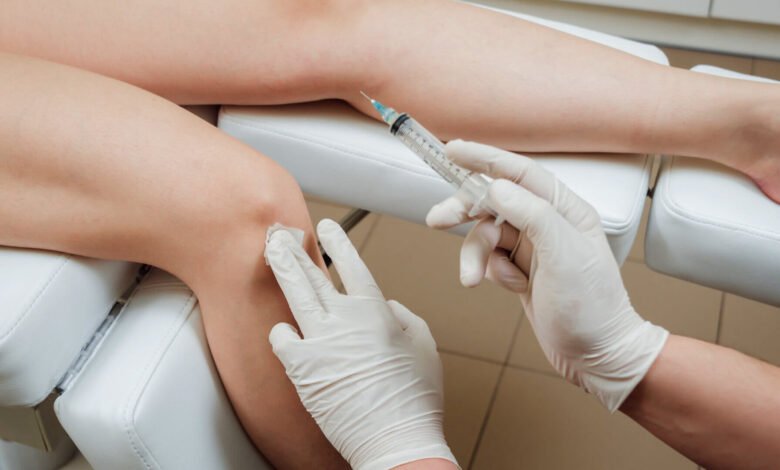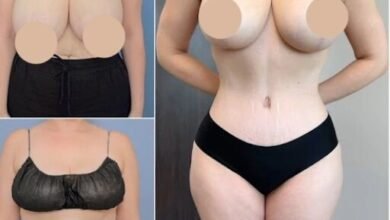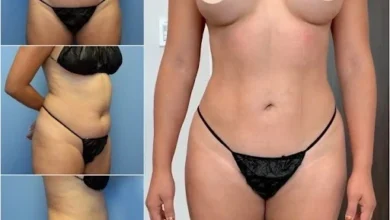
Introduction
Understanding PRP Therapy for Knee Pain
PRP therapy is a cutting-edge treatment that utilizes the body’s own platelets to stimulate tissue repair and regeneration. The process involves drawing a small amount of blood, processing it to concentrate the platelets, and injecting the enriched plasma into the affected knee joint. These platelets contain growth factors that accelerate healing and reduce inflammation.
How PRP Injections Are Transforming Knee Pain Treatment
The evolution of PRP therapy is reshaping the way knee pain is managed. Traditional treatments often involve painkillers, physical therapy, or surgery. PRP offers a more natural approach, enhancing the body’s ability to heal itself. With ongoing research and advancements, PRP is becoming a preferred option for individuals seeking effective and long-lasting knee pain relief.
The Science Behind PRP and Knee Joint Healing
PRP therapy works by stimulating cellular repair and collagen production. Growth factors released from platelets help in reducing joint inflammation, promoting cartilage regeneration, and improving joint lubrication. These mechanisms contribute to pain reduction and enhanced joint function, making PRP an ideal choice for knee pain treatment.
Why PRP Is Gaining Popularity in Abu Dhabi
The demand for non-invasive and regenerative treatments is increasing in Abu Dhabi. PRP injections offer several benefits, such as minimal downtime and long-lasting relief. As more individuals seek alternatives to surgery, PRP therapy is becoming a leading choice for knee pain management in the region.
Advancements in PRP Technology for Knee Pain
Technological advancements are enhancing the effectiveness and precision of PRP therapy. Improved centrifugation methods ensure a higher concentration of growth factors, leading to better treatment outcomes. With continued innovation, PRP injections are set to become even more effective for knee pain relief.
How PRP Compares to Other Knee Pain Treatments
PRP therapy stands out from conventional treatments due to its natural healing process. Unlike steroid injections that provide temporary relief, PRP targets the root cause of knee pain by stimulating tissue repair. This makes it a sustainable and long-term solution compared to other available treatments.
Who Can Benefit from PRP Therapy for Knee Pain?
PRP therapy is suitable for individuals suffering from various knee conditions, including mild to moderate osteoarthritis, ligament injuries, and chronic knee pain. Those looking for a non-surgical approach to knee pain relief can consider PRP as a potential solution.
What to Expect During a PRP Injection Procedure
The PRP injection procedure is minimally invasive and typically completed within an hour. After drawing blood, it is processed to separate the platelets. The concentrated PRP is then injected into the knee joint under precise guidance to ensure accurate placement. Patients can usually resume normal activities shortly after the procedure.
Post-Treatment Recovery and Rehabilitation
Recovery following PRP injections is generally quick and smooth. Most individuals experience gradual pain relief over the following weeks. Mild discomfort may be present initially, but this subsides as healing progresses. Engaging in light movement and avoiding excessive strain on the knee helps in achieving optimal results.
Long-Term Outlook for PRP Knee Pain Treatment
With ongoing research and technological advancements, PRP therapy is expected to become even more effective in the future. The ability to enhance tissue regeneration and reduce pain without surgery makes PRP an exciting area of regenerative medicine. Future developments may include personalized PRP formulations tailored to individual needs for improved outcomes.
The Role of Research in Improving PRP Therapy
Continuous research is expanding the understanding of PRP’s effectiveness for knee pain treatment. Clinical studies focus on optimizing platelet concentration and injection techniques to ensure better results. As medical science progresses, PRP is expected to become a primary treatment option for knee pain relief.
The Future of Regenerative Medicine in Knee Pain Treatment
PRP therapy represents the future of regenerative medicine for knee pain. As new discoveries emerge, treatments will become more advanced, offering faster recovery and superior healing outcomes. The integration of regenerative therapies into mainstream medical practice will pave the way for a pain-free future for individuals suffering from knee issues.
Conclusion
PRP therapy is revolutionizing the way knee pain is treated in Abu Dhabi. As a non-surgical and regenerative approach, PRP injections offer a promising future for those seeking long-lasting knee pain relief. With continuous advancements in medical science, PRP is expected to become a key player in knee pain management, helping individuals regain mobility and improve their quality of life.
Frequently Asked Questions
How long does it take to see results from PRP injections for knee pain?
Most patients experience noticeable improvement within a few weeks, with continued healing over several months. The results vary depending on the severity of the knee condition.
Is PRP therapy suitable for all types of knee pain?
PRP is most effective for mild to moderate knee conditions, including osteoarthritis and ligament injuries. A consultation with a specialist can determine if PRP is the right choice.
How many PRP injections are needed for knee pain relief?
The number of injections varies based on individual needs. Some individuals may require a single session, while others may benefit from multiple treatments for enhanced healing.
Is there any downtime after PRP injections?
PRP therapy involves minimal downtime, allowing patients to resume normal activities soon after the procedure. However, strenuous activities should be avoided initially.
Can PRP therapy replace knee surgery?
For some individuals, PRP therapy provides significant relief and may delay or eliminate the need for surgery. However, in severe cases, surgery may still be necessary.



